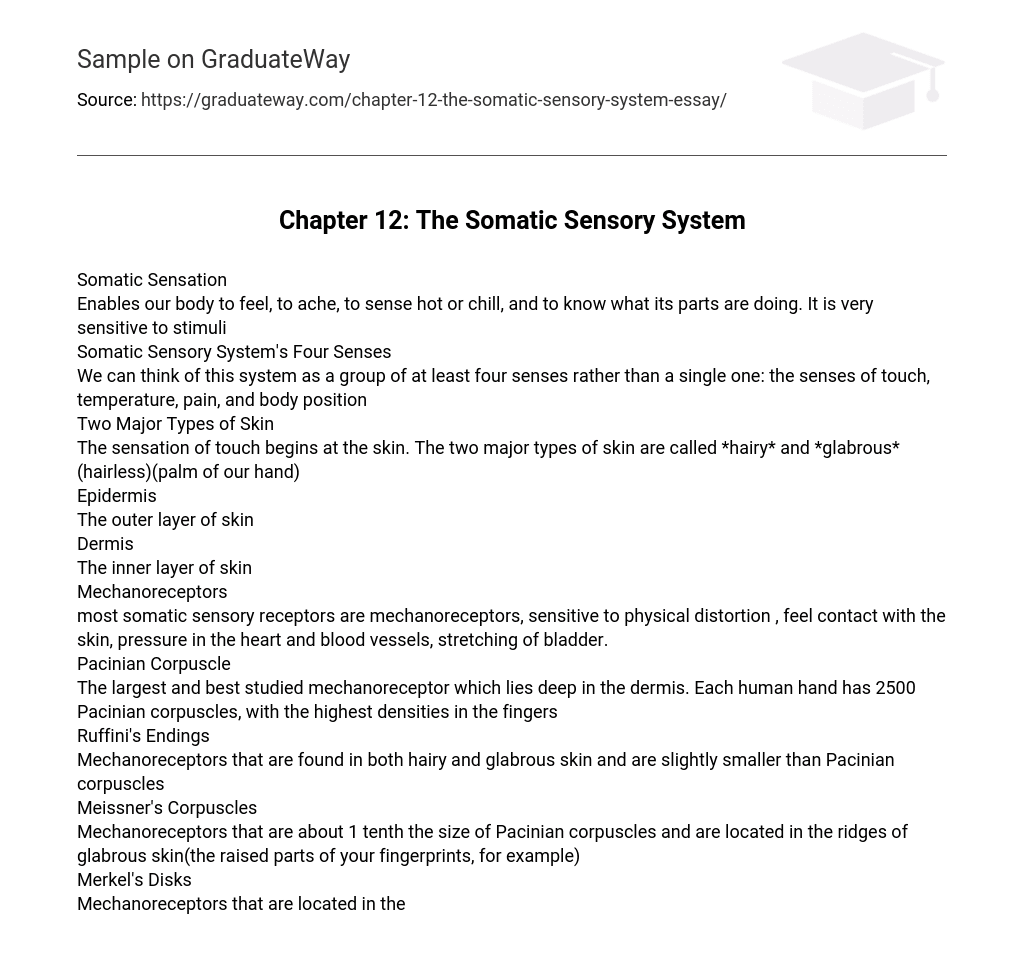Somatic Sensation: Enables our body to feel, to ache, to sense hot or chill, and to know what its parts are doing. It is very sensitive to stimuli.
Somatic Sensory System’s Four Senses; We can think of this system as a group of at least four senses rather than a single one: the senses of touch, temperature, pain, and body position.
Two Major Types of Skin; The sensation of touch begins at the skin. The two major types of skin are called *hairy* and *glabrous*(hairless)(palm of our hand).
Epidermis: The outer layer of skin.
Dermis: The inner layer of skin.
Mechanoreceptors: most somatic sensory receptors are mechanoreceptors, sensitive to physical distortion , feel contact with the skin, pressure in the heart and blood vessels, stretching of bladder.
Pacinian Corpuscle; The largest and best studied mechanoreceptor which lies deep in the dermis. Each human hand has 2500 Pacinian corpuscles, with the highest densities in the fingers.
Ruffini’s Endings: Mechanoreceptors that are found in both hairy and glabrous skin and are slightly smaller than Pacinian corpuscles.
Meissner’s Corpuscles: Mechanoreceptors that are about 1 tenth the size of Pacinian corpuscles and are located in the ridges of glabrous skin(the raised parts of your fingerprints, for example).
Merkel’s Disks: Mechanoreceptors that are located in the epidermis which each consist of a nerve terminal and a flattened, non-neural epithelial cell (the Merkel cell).
Krause End Bulbs: Mechanoreceptors which lie in the border regions of dry skin and mucous membrane(around the lips and genitals, for example), and have nerve terminals look like knotted balls of string.





